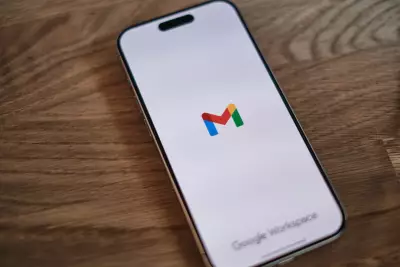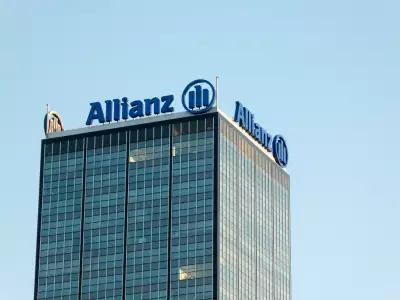Why Some People Are Choosing a Permanent Digital Detox
Table of Contents
- Published: Apr 28, 2025
- Last Updated: Jul 07, 2025
As our reliance on digital devices and technologies has increased, so have concerns about the negative effects of excessive screen time on mental and physical health. As a result, many people are choosing digital detox as a structured way to disconnect, improve well-being, and have greater control over their digital footprint.
Much like an individual who takes a break from alcohol, sugar, or other substances for health reasons, someone who participates in a digital detox commits to reducing or eliminating their use of smartphones, computers, social media, or similar devices and technologies to improve their mental and physical well-being.
What Is a Digital Detox?
A digital detox is an intentional reduction or elimination of the use of smartphones, computers, and social media to promote improved mental and physical well-being.
What a digital detox looks like will vary from person to person, depending on their specific needs and goals. A digital detox can range from brief, targeted breaks lasting a day or a weekend to
a long-term period of abstinence, with varying levels that target specific app limitations, set screen time boundaries, or even a permanent digital detox, where the individual decides to give up the digital world, or at least some aspect of it, for good.
Temporary vs. Permanent Digital Detox
Whether a digital detox is temporary or permanent, both have the same goal: to allow the user to take a break from constant connectivity, screen time, and the potential for information overload. A digital detox will enable you to recharge, engage in more offline activities, and reconnect with yourself and others.
A temporary digital detox may be targeted, where the user commits to restricting specific apps, websites, or devices for a set period. It may be partial, where the user attempts to reduce screen time and device usage without eliminating it. It may also involve digital fasting, where the user commits to complete abstinence from all digital devices and media for some time. In the case of permanent digital detox, a person intentionally limits or eliminates the long-term use of smartphones, computers, tablets, social media, and other digital devices.
Why Some People Are Saying Goodbye to the Digital World
For most people, the decision to leave the digital world behind is a deeply personal one. Their permanent digital detox often aims to improve their overall health and well-being. For others, a motivating factor is a desire to protect their data and privacy or escape the ever-growing attention economy. In the end, many people feel a burning desire to reconnect with the real world, which can easily be lost behind our vast digital landscape.
Here’s a look at some of these factors in greater detail:
Mental Health and Well-Being
Studies show that excessive screen time can negatively impact overall well-being. The physical effects include back, neck, and shoulder pain and eye strain. Anxiety, depression, and other mood disorders are just some of the mental health issues associated with excessive screen time. As a result, more and more people are unplugging permanently to combat stress, burnout, and the increased sedentary behavior associated with digital devices and technology.
Privacy and Data Concerns
The excessive use of digital devices and technology raises significant privacy and data concerns, including increased vulnerability to data breaches, identity theft, surveillance, and the potential for companies to misuse personal information. One of the major benefits of a digital detox, whether it targets only certain apps and platforms or eliminates digital interactions completely, is that it can lower these risks, making it a significant driver for people to disconnect.
Escaping the Attention Economy
Our modern economic landscape is often described as an attention economy, where human attention is treated like a scarce and valuable resource. Businesses and platforms constantly compete to capture and maintain our attention, usually through techniques prioritizing engagement and data collection, often over users’ well-being and safety. The resulting social media addiction, constant notifications, and algorithm-driven content can frequently affect focus and productivity, causing many to look for ways to escape this modern attention economy.
Reconnecting with the Physical World
Because humans often lose sight of the value of real-world experiences and connections when they become entangled in the digital world, digital detox initiatives, whether structured programs, retreats, or self-imposed digital detoxes, often involve participating in more offline activities. These include reconnecting with nature, rekindling old hobbies and discovering new ones, or simply spending quality time with friends and family.
Many people are turning to permanent digital detox to disconnect from the false reality of the digital world so that they may reconnect with themselves and their surroundings. This practice fosters a deeper sense of presence and mindfulness and creates a simpler, distraction-free lifestyle.
How To Permanently Digital Detox (If You Choose To)
Excessive digital media and technology exposure can negatively impact relationships, mental health, and overall well-being. When screen time becomes problematic, a digital detox can be a great way to achieve a healthier lifestyle. Sometimes, the occasional short-term digital detox can do the trick, but often, more long-term solutions are needed. Since each person’s relationship with the digital world is different, what a long-term or permanent digital detox looks like will be unique to you. Here are some steps you can take if you are considering a long-term or permanent digital detox:

Step 1 – Identify Your Digital Dependencies
Everyone’s online habits are unique. Some people spend most of their screen time scrolling through social media, while others gravitate toward online puzzles and games. Many are constantly “plugged in,” whether keeping up with news headlines or responding to work-related notifications. To make better use of screen time, consider replace scrolling with Headway app as a way to absorb bite-sized knowledge and personal development insights.
Reflect on your online habits to identify potential digital dependencies. Do you spend an excessive amount of time online? Do you feel anxious or irritable when you are offline? Do you neglect responsibilities in favor of digital activities? If the answer to any of these questions is yes, a permanent or long-term digital detox may be the answer, whether that means cutting back screen time, deleting a specific app, or ditching your smartphone altogether.
Step 2 – Delete or Limit Social Media and Online Accounts
Even if you haven’t experienced significant negative impacts from social media use, it can still affect your well-being. So, before embarking on a digital detox, consider what you want your social media use to look like moving forward. Do you want to limit the time you spend on social media? Do you want to cut back the time spent on a specific platform? Do you need a break? A short one, a total break, or simply limit your scrolling?
Here are some tips if you think your social media use is an issue:
- Track your time on social media: It's easy to lose track of time when you become absorbed in social media. Try to determine exactly how much time you spend on social media. Several apps are available to help you track your use.
- Turn off notifications: To minimize distractions and avoid frequent interruptions, turn off all notifications from your social media apps.
- Downsize your social media consumption: Reduce the number of platforms you regularly use, either temporarily or permanently, to cut back on your screen time. You can also set aside specific times and time limits for your social media use.
- Team up with a partner: Embarking on a digital detox with a partner helps to provide encouragement, motivation, and accountability.
- Set offline times: Choose specific times throughout the day or week to be completely offline. You can also take a temporary break, lasting a day or more, where you avoid social media altogether.
Step 3 – Create a Technology-Free Routine
To create a technology-free routine, identify specific times and places for a digital detox, replace screen time with engaging “real-world” activities, and set clear boundaries for yourself and others. Start by designating certain areas of your home, such as the bedroom or dining room, as tech-free zones. Plan specific times each day or week to unplug completely, whether it's an hour before bed, during meals, or for an entire weekend. Giving up screen time as part of a digital detox can be harder than you think, so start small. Make manageable changes and gradually increase the duration of your tech-free periods.
Step 4 – Find Offline Alternatives
It is important to be intentional when embarking on a digital detox. Vaguely aiming for "less screen time” usually isn’t enough. It's wise to choose specific times and activities to replace screen time. After all, if the purpose of a digital detox is to pursue a healthier lifestyle, you’ll want something to fill all that newfound free time.
Some engaging, offline alternatives include:
- Exploring hobbies: Reading, journaling, drawing, practicing mindfulness, or learning a new skill are great alternatives to spending time online.
- Getting outdoors: Walks, hikes, or simply enjoying sunshine and fresh air are good for reclaiming mental and physical health.
- Connecting with others: Face-to-face interactions with friends and family, or through local groups and events, are a healthy alternative to interacting with folks online.
- Engaging in creative pursuits: Cooking, gardening, and scrapbooking are just a few of the countless creative activities that don't involve screens.
However you choose to digital detox, try and make it a habit that can ultimately lead to a lifestyle change. In the end, consistency is key. Making tech-free time a regular part of your routine and sticking to it as much as possible is a surefire way to achieve success and reap the benefits of a digital detox.














